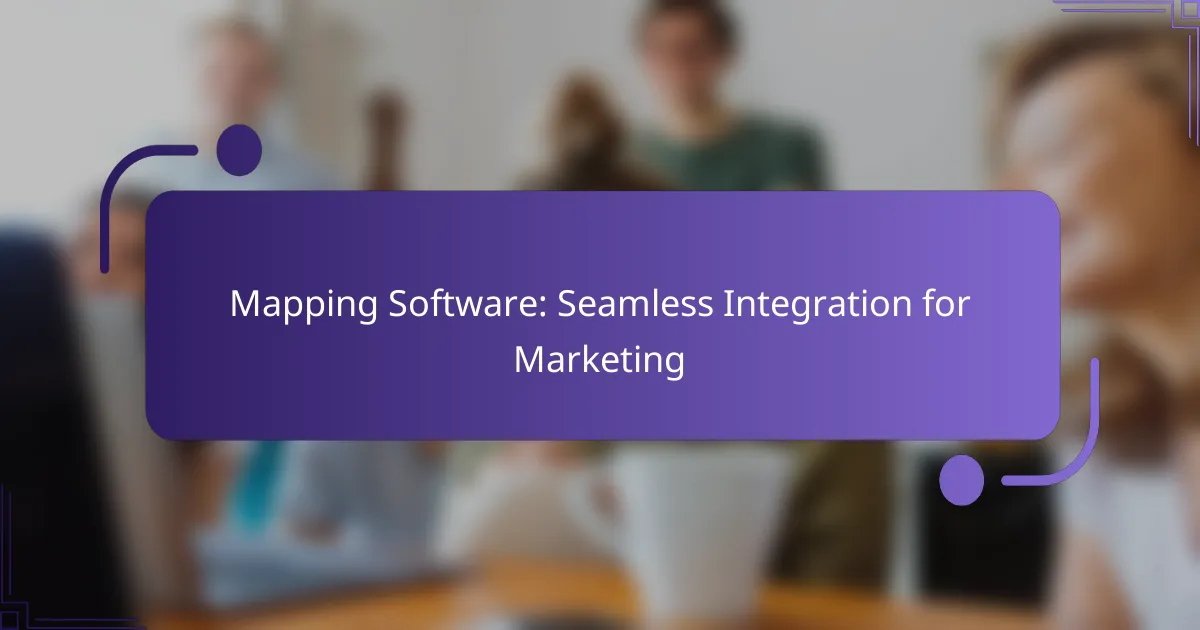Mapping software is essential for modern marketing, offering tools that enhance data visualization and customer insights through seamless integration of geographic data. By leveraging these platforms, marketers can improve decision-making and target specific demographics more effectively, ultimately enhancing campaign performance and analysis.
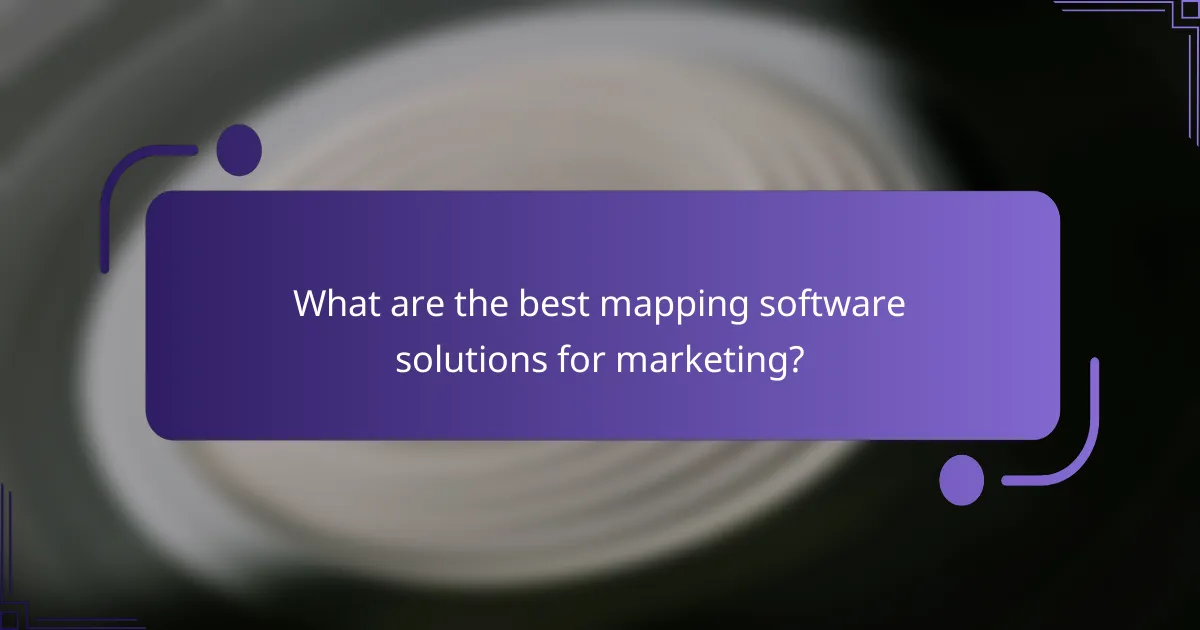
What are the best mapping software solutions for marketing?
The best mapping software solutions for marketing include tools that enhance data visualization, customer insights, and location-based strategies. These platforms allow marketers to integrate geographic data seamlessly, improving decision-making and targeting efforts.
Google Maps Platform
Google Maps Platform offers robust mapping capabilities that are essential for marketing applications. It provides APIs for embedding maps, geocoding, and location data, making it easy to create custom applications that enhance user experience.
Consider using Google Maps for location-based advertising, where businesses can target customers based on their proximity to physical stores. The platform’s extensive data and user-friendly interface make it a top choice for marketers.
Mapbox
Mapbox is a versatile mapping platform known for its customizable maps and data visualization tools. It allows marketers to create visually appealing maps that can be tailored to specific branding needs, enhancing customer engagement.
When using Mapbox, take advantage of its analytics features to track user interactions with maps. This data can inform marketing strategies and improve targeting based on user behavior and preferences.
ArcGIS Online
ArcGIS Online is a powerful mapping solution that provides advanced geographic information system (GIS) capabilities. It is particularly useful for marketers looking to analyze spatial data and create detailed geographic visualizations.
Utilize ArcGIS Online for market analysis by layering demographic data over geographic maps. This can help identify target markets and optimize marketing campaigns based on location-specific insights.
QGIS
QGIS is an open-source mapping software that offers extensive features for spatial data analysis and visualization. It is a cost-effective option for marketers who need advanced mapping capabilities without the associated costs of proprietary software.
Marketers can use QGIS to create custom maps and perform spatial analysis, which can inform strategic decisions. However, be prepared for a steeper learning curve compared to more user-friendly platforms.
Tableau
Tableau is primarily a data visualization tool, but it also offers mapping features that can enhance marketing analytics. It allows users to visualize data geographically, making it easier to identify trends and patterns related to customer behavior.
Incorporate Tableau’s mapping capabilities to create interactive dashboards that display geographic data alongside other business metrics. This integration can provide a comprehensive view of marketing performance across different regions.
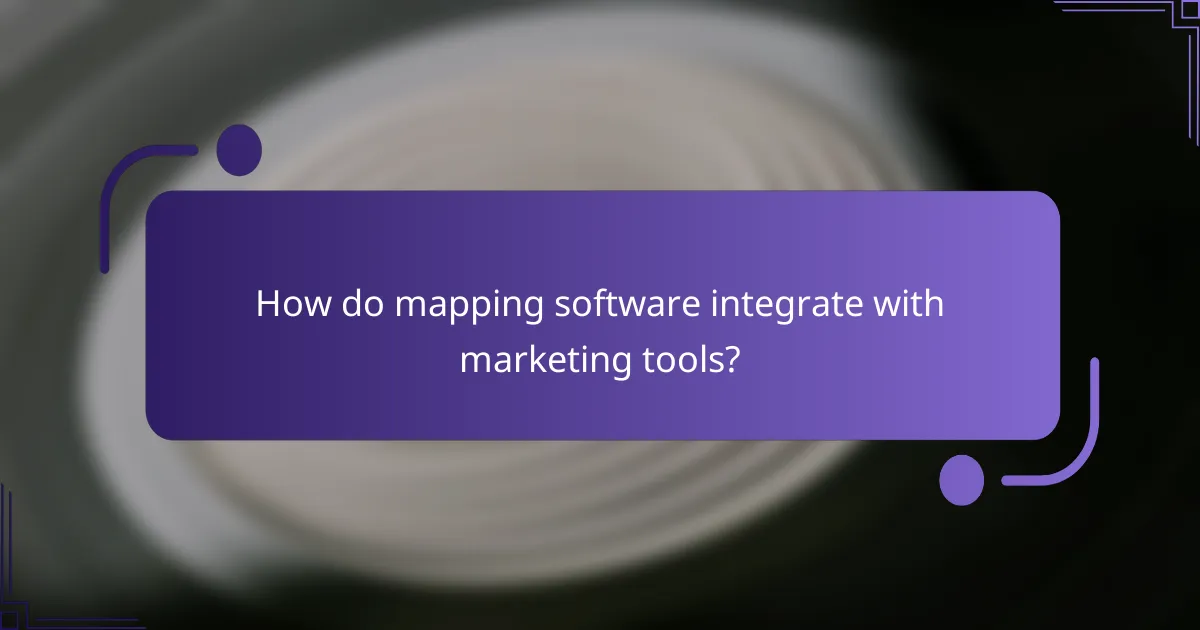
How do mapping software integrate with marketing tools?
Mapping software integrates with marketing tools by enabling data sharing and visualization, enhancing campaign targeting and performance analysis. These integrations streamline workflows, allowing marketers to leverage geographical insights and customer data effectively.
API integrations
API integrations are crucial for connecting mapping software with various marketing platforms. They allow for real-time data exchange, enabling marketers to pull customer information, sales data, and geographic insights directly into their mapping tools.
When selecting mapping software, ensure it offers robust API support for the marketing tools you use. Look for compatibility with popular platforms like Google Analytics, Salesforce, or HubSpot to maximize your marketing efforts.
Data visualization capabilities
Data visualization capabilities in mapping software help marketers interpret complex data sets through maps and charts. This feature allows users to visualize customer demographics, sales territories, and campaign performance geographically.
Effective data visualization can reveal trends and patterns that may not be apparent in traditional reports. Choose mapping software that offers customizable visualizations to tailor insights to your specific marketing needs.
CRM synchronization
CRM synchronization ensures that customer data from your CRM system is automatically updated in your mapping software. This integration allows marketers to maintain accurate records and leverage customer insights for targeted campaigns.
When implementing CRM synchronization, verify that the mapping software supports your CRM system, whether it’s Salesforce, Zoho, or another platform. Regularly check for data consistency to avoid discrepancies that could impact marketing strategies.
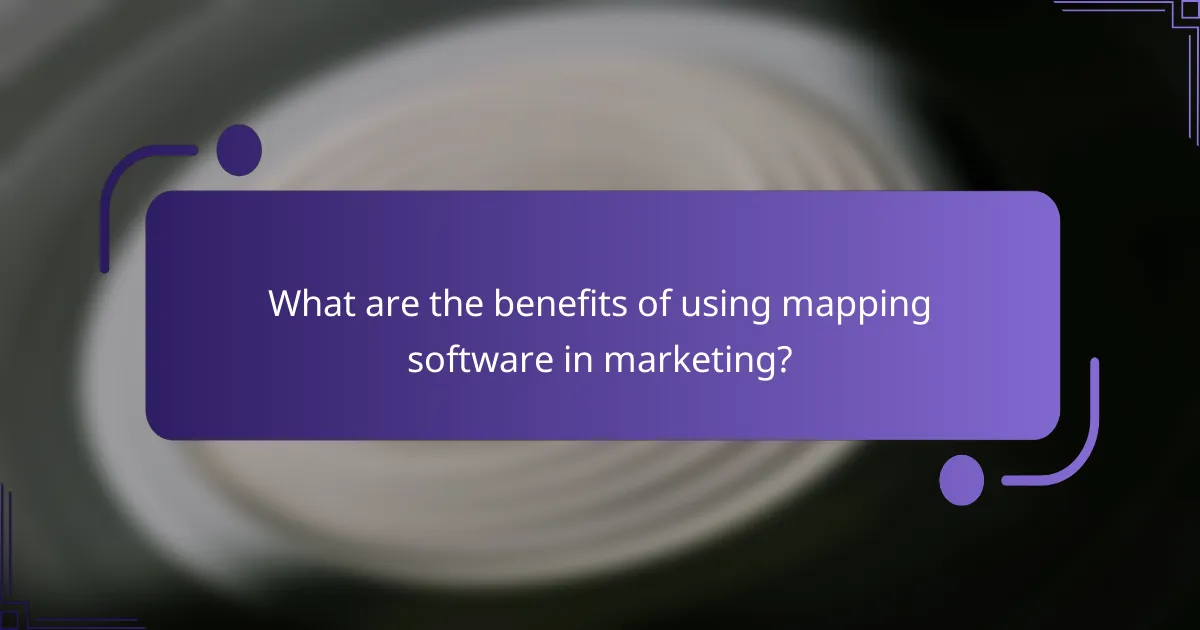
What are the benefits of using mapping software in marketing?
Mapping software enhances marketing strategies by providing visual insights into customer behavior and geographic trends. This technology allows businesses to target specific demographics more effectively, analyze data comprehensively, and tell compelling stories through visuals.
Enhanced customer targeting
Mapping software enables businesses to identify and segment their target audience based on location and behavior. By analyzing geographic data, marketers can tailor campaigns to specific regions, ensuring that messaging resonates with local preferences.
For example, a retail chain can use mapping tools to determine which neighborhoods have the highest concentration of potential customers. This allows them to allocate resources efficiently, such as placing ads in local publications or hosting events in those areas.
Improved data analysis
With mapping software, marketers can visualize complex data sets, making it easier to identify trends and patterns. This visual representation helps in understanding customer demographics, sales performance, and market saturation across different regions.
For instance, a company might analyze sales data overlaid on a map to pinpoint areas with declining sales. This insight can prompt targeted marketing efforts or adjustments in product offerings to better meet local demand.
Visual storytelling
Mapping software allows marketers to create engaging visual narratives that illustrate their brand’s journey and impact. By combining maps with data, businesses can effectively communicate their story to stakeholders and customers.
For example, a non-profit organization can showcase its outreach efforts by mapping the locations of its projects. This not only highlights achievements but also encourages potential donors by demonstrating the organization’s reach and effectiveness in various communities.
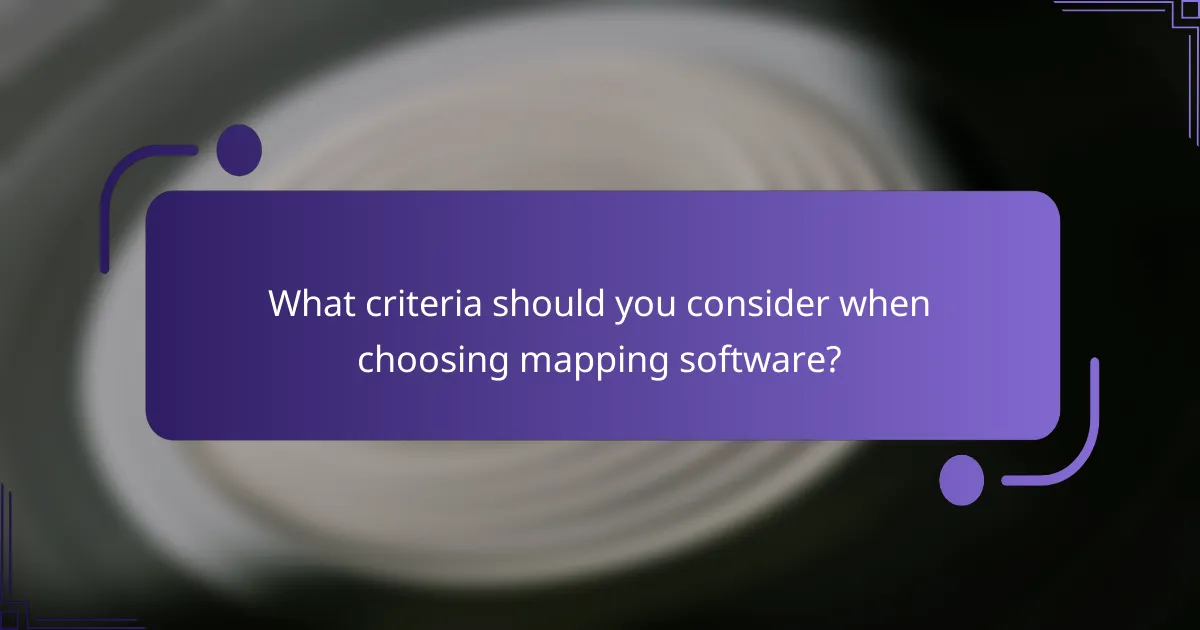
What criteria should you consider when choosing mapping software?
When selecting mapping software, consider factors such as ease of use, cost-effectiveness, and the feature set. These criteria will help ensure that the software meets your marketing needs efficiently and effectively.
Ease of use
Ease of use is crucial for ensuring that your team can quickly adapt to the mapping software. Look for intuitive interfaces and straightforward navigation that minimize the learning curve. A user-friendly platform can significantly enhance productivity and reduce training time.
Consider software that offers comprehensive tutorials or customer support to assist users. This can be particularly beneficial for teams with varying levels of technical expertise.
Cost-effectiveness
Cost-effectiveness involves evaluating the pricing structure of the mapping software relative to its features and benefits. Some software may charge a monthly subscription, while others might offer a one-time purchase option. Assess your budget and determine which pricing model aligns with your financial strategy.
Additionally, consider any hidden costs such as add-ons or maintenance fees. A clear understanding of total expenses will help you avoid overspending and ensure the software delivers value for your investment.
Feature set
The feature set of mapping software should align with your specific marketing goals. Essential features may include data visualization, real-time updates, and integration capabilities with other marketing tools. Identify which functionalities are non-negotiable for your projects.
It can be helpful to create a checklist of desired features and compare different software options. This will allow you to prioritize your needs and select a solution that offers the best combination of capabilities for your marketing efforts.
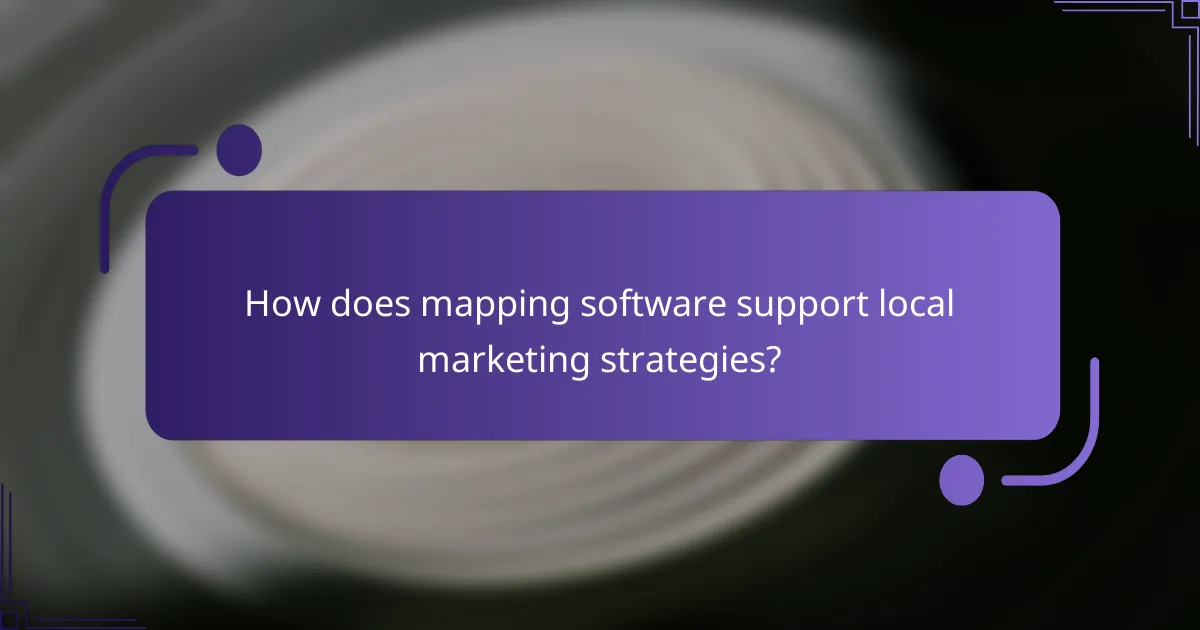
How does mapping software support local marketing strategies?
Mapping software enhances local marketing strategies by providing tools that allow businesses to visualize geographic data, target specific audiences, and optimize their outreach efforts. This technology helps marketers understand local demographics and consumer behavior, leading to more effective campaigns.
Geotargeting capabilities
Geotargeting enables businesses to deliver tailored marketing messages to specific geographic areas. By using mapping software, companies can identify high-density locations of their target audience and adjust their advertising efforts accordingly. For example, a restaurant can promote special offers to users within a few miles of its location, increasing foot traffic and sales.
Effective geotargeting requires accurate data collection and analysis. Businesses should regularly update their geographic information to reflect changes in consumer behavior and local trends. This ensures that marketing campaigns remain relevant and impactful.
Local SEO enhancement
Mapping software plays a crucial role in enhancing local SEO by helping businesses optimize their online presence for local searches. By integrating location data into their websites and Google My Business profiles, companies can improve their visibility in search results for local queries. This is particularly important for service-based businesses that rely on local clientele.
To maximize local SEO benefits, businesses should focus on including location-specific keywords in their content and ensuring consistent NAP (Name, Address, Phone number) information across all platforms. Regularly updating content with local events or news can also boost search rankings.
Event mapping
Event mapping allows businesses to visualize and promote local events effectively. By using mapping software, companies can identify potential venues, track attendance, and analyze participant demographics. This information helps in planning future events that resonate with the local community.
When organizing events, businesses should consider factors such as accessibility, local interests, and timing. Using mapping tools to assess these elements can lead to better attendance and engagement. Additionally, promoting events through geotargeted ads can further enhance participation rates.
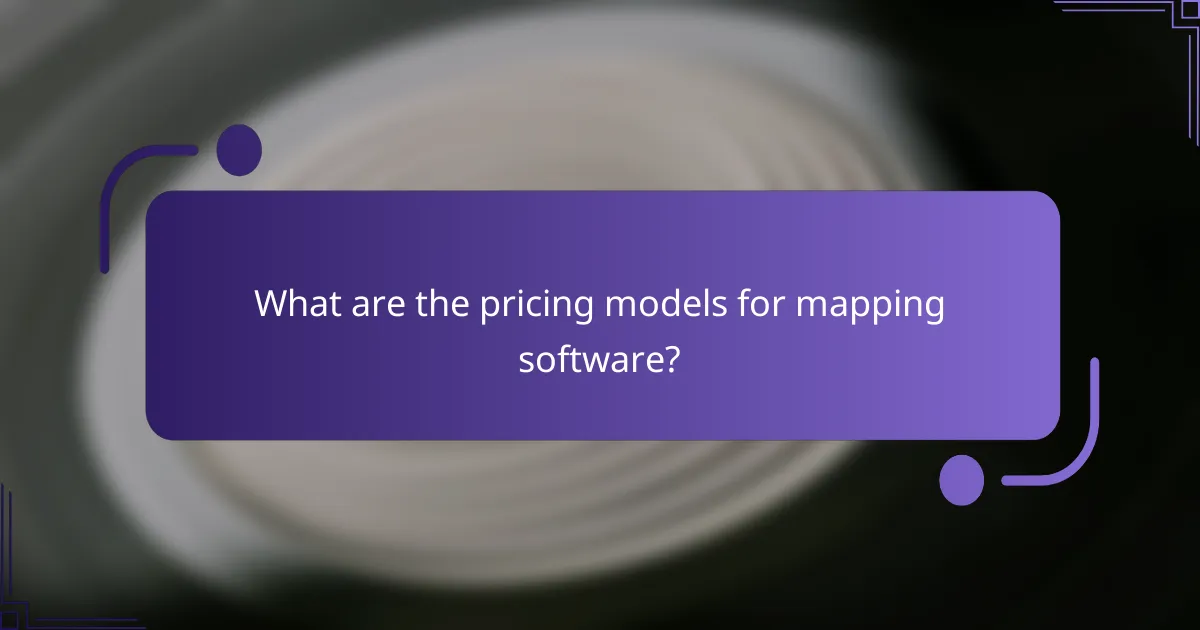
What are the pricing models for mapping software?
Mapping software typically employs various pricing models, including subscription-based, pay-as-you-go, and one-time purchase options. Each model has its advantages and considerations, allowing businesses to choose based on their specific needs and budget constraints.
Subscription-based pricing
Subscription-based pricing is a common model for mapping software, where users pay a recurring fee, often monthly or annually, to access the service. This model allows businesses to spread costs over time and often includes regular updates and customer support as part of the package.
When considering subscription-based options, evaluate the features included in each tier. Basic plans may offer essential mapping tools, while premium plans can provide advanced analytics, additional storage, or integration capabilities. Prices can vary widely, typically ranging from around $10 to several hundred dollars per month, depending on the features and scale of usage.
It’s crucial to assess your organization’s needs before committing to a subscription. Look for trial periods to test the software and ensure it meets your requirements. Additionally, be aware of potential hidden costs, such as fees for exceeding usage limits or add-on features that may not be included in the base price.
